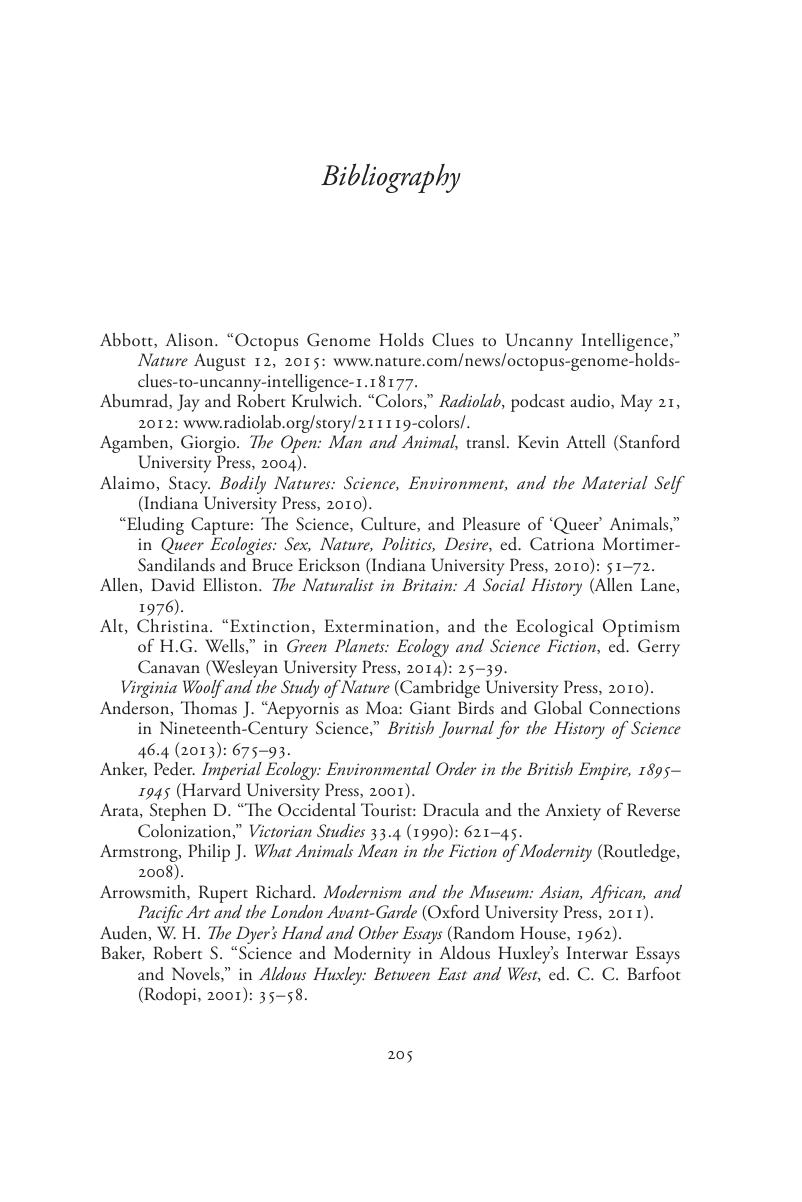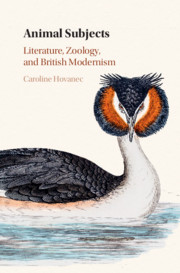Book contents
- Animal Subjects
- Animal Subjects
- Copyright page
- Contents
- Acknowledgments
- Introduction
- Chapter 1 H. G. Wells, Charles Elton, and the Struggle for Existence
- Chapter 2 Aldous Huxley, Henry Eliot Howard, and the Observational Ethic
- Chapter 3 Romantic Ethologies: D. H. Lawrence and Julian Huxley
- Chapter 4 Bloomsbury's Comparative Psychology: Bertrand Russell, Julian Huxley, J. B. S. Haldane, Virginia Woolf
- Conclusion
- Bibliography
- Index
- References
Bibliography
Published online by Cambridge University Press: 17 August 2018
- Animal Subjects
- Animal Subjects
- Copyright page
- Contents
- Acknowledgments
- Introduction
- Chapter 1 H. G. Wells, Charles Elton, and the Struggle for Existence
- Chapter 2 Aldous Huxley, Henry Eliot Howard, and the Observational Ethic
- Chapter 3 Romantic Ethologies: D. H. Lawrence and Julian Huxley
- Chapter 4 Bloomsbury's Comparative Psychology: Bertrand Russell, Julian Huxley, J. B. S. Haldane, Virginia Woolf
- Conclusion
- Bibliography
- Index
- References
Summary

- Type
- Chapter
- Information
- Animal SubjectsLiterature, Zoology, and British Modernism, pp. 205 - 220Publisher: Cambridge University PressPrint publication year: 2018



